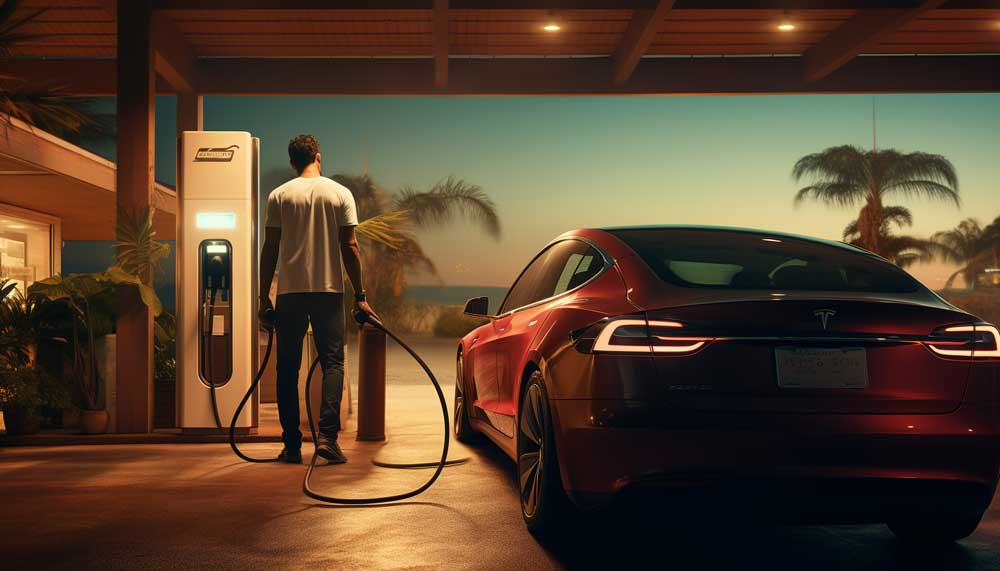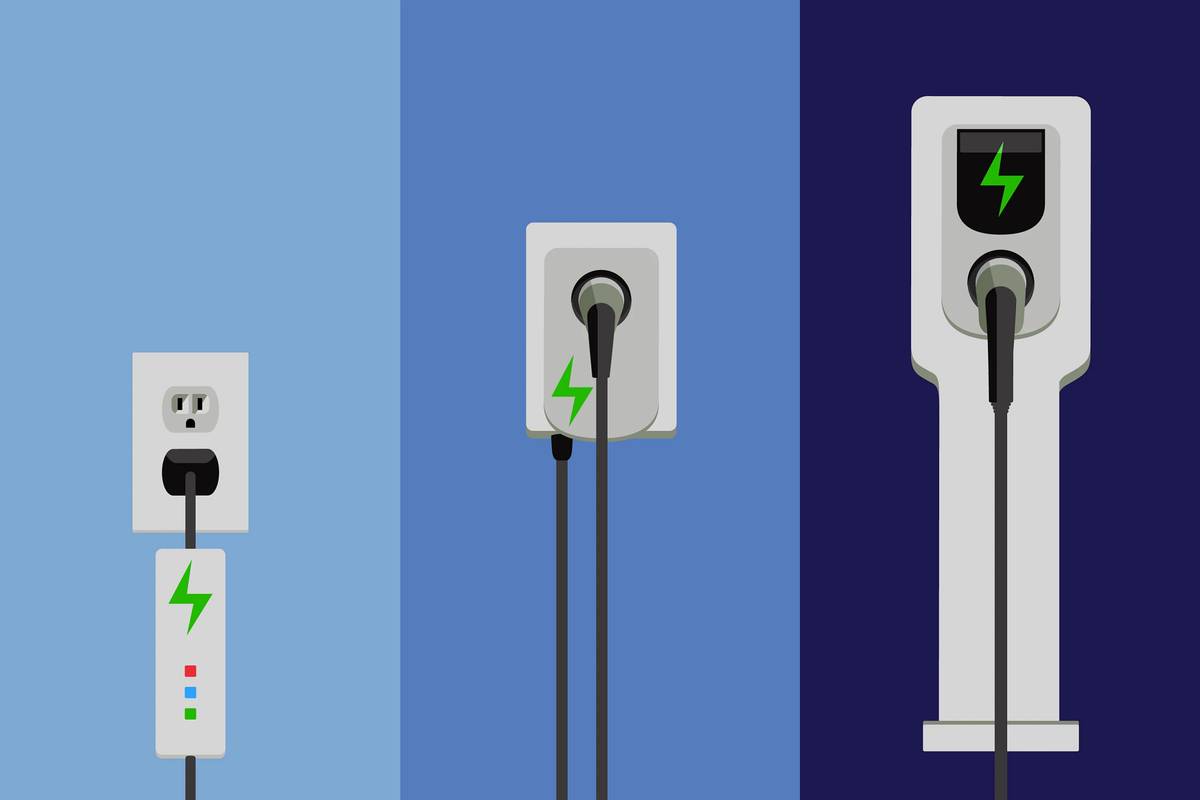In the era of sustainability and environmental attention, the transition closer to electric powered powered vehicles (EVs) has come to be a pivotal thing of present day transportation. As the sector seeks options to conventional fossil gasoline-powered automobiles, electric automobiles gift a promising method to reduce greenhouse gas emissions and combat climate trade. but, the sizable adoption of EVs hinges no longer only at the development of superior cars however additionally on the installed order of sturdy infrastructure to assist them. on the coronary coronary heart of this infrastructure lies the network of electrical vehicle charging stations, a important issue shaping the future of mobility.

Electric car charging stations function the lifeblood of the EV surroundings, imparting drivers with the way to recharge their motors comfortably and correctly. From bustling urban centers to far off highways, those charging stations play a crucial function in assuaging variety tension—the fear of walking out of battery strength during a adventure—at the identical time as facilitating the substantial adoption of electric motors. however what exactly goes into the infrastructure at the returned of these charging stations? How do they operate, and what technology allow their functionality? To delve deeper into the ones questions, permit’s explore the complicated network that powers electric powered vehicle charging.
Evolution of Electric Vehicle Charging Infrastructure
The journey towards setting up a complete electric powered car charging infrastructure has been marked with the aid of big milestones and technological improvements. within the early degrees of EV adoption, charging stations were distinctly sparse, by and large constrained to select urban areas and particular areas with a higher concentration of electrical car users. however, because the demand for EVs surged and recognition of environmental issues grew, governments, agencies, and stakeholders commenced investing inside the enlargement and enhancement of charging infrastructure.
Read more.. Elevate Your EV Experience: Top Charging Tips for Electric Car Owners
One of the key drivers of this evolution has been the improvement of standardized charging protocols and connectors. The emergence of standards such as CHAdeMO, blended Charging machine (CCS), and Tesla’s proprietary Supercharger network has performed a pivotal role in streamlining the charging system and ensuring compatibility throughout unique electric powered vehicle fashions. Standardization has now not only simplified the user revel in but has also facilitated interoperability among charging networks, permitting EV drivers to access a wide variety of charging stations regardless of their vehicle make or model.
Types of Electric Vehicle Charging Stations
Electric powered car charging stations are available various bureaucracy, each catering to exceptional charging wishes and usage situations. widely classified, these charging stations can be classified into three predominant kinds: degree 1, stage 2, and DC speedy Charging.
Read more.. The Financial Matters of Electric Vehicles: Cost Reserve Funds and Long Haul Monetary Advantages
1. Level 1 Charging
Degree 1 charging stations utilize a preferred 120-volt household outlet to supply power to electric automobiles. while convenient for domestic charging, degree 1 stations are especially gradual, usually imparting charging quotes of round 2-5 miles of variety in keeping with hour of charging. As such, they are nice acceptable for overnight charging or topping up the battery throughout extended periods of parking.

Read more.. The Advantages and Disadvantages of Independent Driving: Looking at the Advantages and Concerns
2. Level 2 Charging
Degree 2 charging stations perform at higher voltages (normally 240 volts) and offer quicker charging speeds compared to stage 1 chargers. these stations are usually located in public locations which includes shopping centers, workplaces, and parking garages. level 2 chargers can supply charging prices ranging from 10 to 60 miles of variety in step with hour, making them suitable for each residential and industrial packages.
3. DC Fast Charging
DC speedy Charging, also known as level three charging, represents the pinnacle of charging pace and performance. those stations leverage direct current (DC) power to supply fast charging, permitting EVs to top off their batteries in a remember of minutes in preference to hours. DC rapid Chargers are usually deployed alongside highways and principal tour routes, enabling long-distance travel and decreasing charging downtime for drivers at the go.
Components of Electric Vehicle Charging Stations
Behind the sleek exterior of an electric vehicle charging station lies a complex network of components and systems designed to facilitate the charging process seamlessly. While the specific configuration may vary depending on the charging station’s type and manufacturer, several core components are fundamental to their operation.
1. Stage 1 Charging
Level 1 charging stations utilize a fashionable 120-volt household outlet to deliver strength to electric powered automobiles. at the same time as handy for domestic charging, degree 1 stations are quite sluggish, usually presenting charging rates of round 2-5 miles of range per hour of charging. As such, they may be quality proper for in a single day charging or topping up the battery for the duration of extended durations of parking.

2. stage 2 Charging
Level 2 charging stations operate at higher voltages (generally 240 volts) and provide quicker charging speeds as compared to stage 1 chargers. these stations are commonly observed in public locations which includes shopping centers, workplaces, and parking garages. degree 2 chargers can supply charging quotes starting from 10 to 60 miles of range according to hour, making them suitable for both residential and business packages.
3. DC fast Charging
DC fast Charging, additionally called level three charging, represents the pinnacle of charging pace and efficiency. those stations leverage direct modern-day (DC) strength to supply fast charging, allowing EVs to refill their batteries in a rely of minutes rather than hours. DC rapid Chargers are usually deployed along highways and main journey routes, enabling lengthy-distance tour and reducing charging downtime for drivers at the move.
Additives of electrical automobile Charging Stations
in the back of the smooth exterior of an electric powered vehicle charging station lies a complex community of additives and structures designed to facilitate the charging technique seamlessly. at the same time as the particular configuration can also vary relying on the charging station’s kind and producer, several center components are essential to their operation.
5. Communication Module
A communication module enables the charging station to communicate with external networks and backend systems, facilitating remote monitoring, diagnostics, and software updates. Through wireless or wired connectivity options, charging stations can relay essential information such as charging status, energy consumption, and billing data to service providers and network operators.

Challenges and Opportunities in Electric Vehicle Charging Infrastructure
While the proliferation of electric vehicle charging stations represents a significant step towards sustainable transportation, several challenges remain to be addressed to ensure the continued growth and effectiveness of charging infrastructure.
1. Range Anxiety and Charging Accessibility
Despite advancements in charging technology and infrastructure expansion, range anxiety remains a prevalent concern among electric vehicle owners. Addressing this issue requires not only the deployment of more charging stations but also strategic placement along travel routes and in densely populated areas to enhance accessibility and convenience for EV drivers.
2. Grid Integration and Power Demand
The widespread adoption of electric vehicles poses challenges to the existing electrical grid, particularly in regions with high concentrations of EVs. Managing the increased power demand from charging stations requires careful grid integration strategies, including load management, smart charging solutions, and renewable energy integration to mitigate the strain on utility infrastructure.
3. Interoperability and Standardization
Ensuring interoperability and standardization across charging networks is essential to providing a seamless charging experience for EV drivers. While efforts have been made to establish common standards and protocols, discrepancies still exist between different charging networks, hindering widespread adoption and usability.
4. Scalability and Future Growth
As the electric car marketplace continues to amplify, the scalability of charging infrastructure turns into increasingly important. planning for destiny growth calls for foresight and funding in flexible, scalable charging answers which could accommodate evolving generation and converting market dynamics.
no matter these demanding situations, the electrification of transportation represents a transformative shift closer to a greater sustainable and environmentally pleasant destiny. by addressing key issues and leveraging technological innovations, stakeholders can paintings together to construct a sturdy electric car charging infrastructure that supports the full-size adoption of EVs and hurries up the transition to purifier mobility answers.
Conclusion
Electric vehicle charging stations are greater than only a way to recharge batteries—they constitute the backbone of a burgeoning environment that is reshaping the future of transportation. From humble beginnings to an advanced network spanning continents, the evolution of charging infrastructure mirrors the
